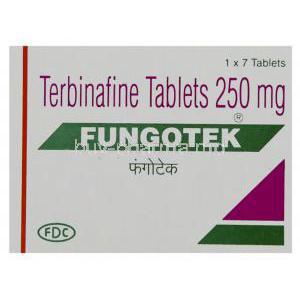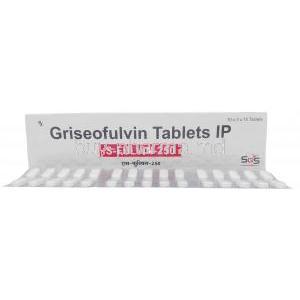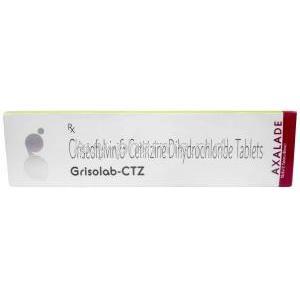Introduction to Caspofungin Acetate Injection
Overview of Caspofungin Acetate
Caspofungin Acetate Injection is a potent antifungal agent used to combat severe fungal infections, particularly those resistant to conventional therapies. It is a semi-synthetic lipopeptide belonging to a novel class of antifungals known as echinocandins.
History and Development
First discovered in the late 1990s, Caspofungin marked a breakthrough in antifungal therapy by offering an alternative to azoles and amphotericin B. Its development was driven by the rising incidence of invasive fungal infections, especially in immunocompromised populations.
Classification: Echinocandin Antifungal Agent
Caspofungin belongs to the echinocandin class, characterized by their unique mechanism of action targeting fungal cell wall synthesis. Unlike traditional antifungals, echinocandins offer fungicidal activity against Candida species and fungistatic effects against Aspergillus species.
Regulatory Approvals and Global Availability
Approved by the U.S. FDA in 2001, Caspofungin has since gained regulatory clearance across Europe, Asia, and other regions, becoming a vital option in hospitals for treating life-threatening fungal infections.
Composition and Pharmaceutical Formulation
Active Ingredient: Caspofungin Acetate
Each vial contains sterile, lyophilized Caspofungin Acetate, formulated specifically for intravenous administration.
Inactive Ingredients and Excipients
- Sucrose
- Mannitol
- Acetic Acid
- Sodium Hydroxide (for pH adjustment)
Available Strengths and Packaging Formats
Caspofungin Acetate Injection is commonly available in vials containing 50 mg or 70 mg of powder for reconstitution, supplied in single-use glass vials.
Mechanism of Action: How Caspofungin Acetate Works
Inhibition of β-(1,3)-D-Glucan Synthesis
Caspofungin specifically inhibits the enzyme β-(1,3)-D-glucan synthase, a key component involved in the synthesis of the fungal cell wall. This inhibition leads to osmotic instability and ultimately fungal cell death.
Impact on Fungal Cell Wall Integrity
By targeting the glucan component of the cell wall, Caspofungin weakens the structural integrity of fungal cells, causing them to lyse under osmotic stress, which is critical for eradicating invasive infections.
Spectrum of Antifungal Activity
Caspofungin demonstrates broad-spectrum antifungal activity against multiple Candida species and Aspergillus species, making it highly effective in both empirical and targeted therapies.
Fungal Species Susceptible to Caspofungin
- Candida albicans
- Candida glabrata
- Candida parapsilosis
- Aspergillus fumigatus
- Aspergillus flavus
Approved Medical Uses of Caspofungin Acetate Injection
Treatment of Invasive Candidiasis
Caspofungin is indicated for the treatment of invasive candidiasis, including candidemia and intra-abdominal abscesses, peritonitis, and pleural space infections caused by Candida species.
Empirical Therapy for Presumed Fungal Infections in Febrile Neutropenic Patients
It is utilized as empirical therapy in neutropenic patients with persistent fever despite broad-spectrum antibiotics, addressing the risk of underlying fungal infections.
Treatment of Invasive Aspergillosis in Patients Refractory or Intolerant to Other Therapies
Caspofungin serves as salvage therapy for invasive aspergillosis in patients who fail or cannot tolerate first-line treatments such as amphotericin B or itraconazole.
Off-Label Uses of Caspofungin Acetate
Use in Fungal Endocarditis
Though not formally approved, Caspofungin has been used successfully in cases of fungal endocarditis, often in combination with surgical intervention.
Therapy for Esophageal Candidiasis
It is occasionally employed off-label for esophageal candidiasis, especially in cases refractory to azole therapy or in severely immunocompromised patients.
Adjunctive Therapy in Cryptococcal Meningitis
Emerging evidence supports the adjunctive use of Caspofungin alongside standard antifungals in difficult-to-treat cryptococcal meningitis cases.
Use in Immunocompromised and Solid Organ Transplant Patients
Caspofungin is increasingly used off-label in solid organ transplant recipients and severely immunocompromised individuals as both treatment and prophylaxis against invasive fungal infections.
Dosage and Administration Guidelines
Initial and Maintenance Dosing for Various Indications
- Loading Dose: 70 mg on Day 1
- Maintenance Dose: 50 mg once daily thereafter
Dosage Adjustments in Hepatic Impairment
Patients with moderate hepatic impairment require dosage adjustment, typically reducing the maintenance dose to 35 mg daily to mitigate drug accumulation risks.
Infusion Rate and Preparation Instructions
The reconstituted solution must be diluted and administered over approximately one hour to minimize infusion-related reactions. Proper aseptic technique is crucial during preparation.
Duration of Therapy Based on Infection Type
Therapy duration is dictated by clinical response, microbiological eradication, and the resolution of immunosuppression factors, generally ranging from 14 to 28 days.
Storage and Stability Requirements
Recommended Storage Conditions Before Reconstitution
Store vials at 2°C to 8°C (36°F to 46°F), protecting from light to maintain potency and stability.
Stability After Reconstitution and Dilution
The reconstituted solution is stable for 24 hours when refrigerated and should be further diluted and used promptly thereafter to prevent microbial contamination.
Handling Precautions During Storage
- Use sterile techniques to avoid contamination.
- Do not freeze the reconstituted solution.
- Inspect visually for particulate matter and discoloration before administration.
Common and Serious Side Effects of Caspofungin Acetate
Overview of Frequently Reported Side Effects
Caspofungin is generally well tolerated; however, side effects can occur, necessitating vigilance during therapy to detect adverse reactions early.
Common Side Effects: Fever, Rash, Phlebitis, Elevated Liver Enzymes
- Fever and chills, particularly early in therapy
- Rash and pruritus indicating potential hypersensitivity
- Phlebitis at the infusion site
- Transient elevations in alanine aminotransferase (ALT) and aspartate aminotransferase (AST)
Serious Adverse Effects: Anaphylaxis, Hepatic Dysfunction, Hemolytic Anemia
- Anaphylactic reactions requiring immediate discontinuation and emergency intervention
- Severe hepatic dysfunction, including hepatocellular injury and cholestasis
- Rare cases of hemolytic anemia, necessitating close monitoring of hematologic parameters
Important Warnings and Precautions
Risk of Hepatic Enzyme Elevation
Caspofungin Acetate has been associated with elevations in hepatic transaminases, including alanine aminotransferase (ALT) and aspartate aminotransferase (AST). These changes may indicate hepatocellular injury and require vigilant monitoring, particularly during prolonged therapy.
Hypersensitivity and Infusion-Related Reactions
Serious hypersensitivity reactions, including anaphylaxis and histamine-mediated symptoms such as rash, facial swelling, pruritus, sensation of warmth, or bronchospasm, have been reported. Immediate discontinuation and appropriate medical management are warranted if these events occur.
Use in Patients with Pre-existing Liver Disease
Patients with baseline hepatic impairment are at higher risk for exacerbated liver dysfunction during Caspofungin therapy. Dose adjustments and cautious use are imperative, with frequent assessment of liver function markers throughout treatment.
Monitoring Recommendations During Treatment
- Periodic liver function tests (LFTs)
- Monitoring for signs of anaphylactic reactions during infusion
- Close observation for clinical deterioration in immunocompromised patients
Contraindications to the Use of Caspofungin Acetate
Known Hypersensitivity to Caspofungin or Other Echinocandins
Caspofungin is contraindicated in individuals with a known hypersensitivity to Caspofungin Acetate or other members of the echinocandin class, due to the risk of life-threatening allergic reactions.
Caution in Severe Hepatic Impairment
Severe hepatic impairment (Child-Pugh Class C) necessitates cautious use of Caspofungin. Risk-benefit assessments must be conducted prior to initiation, and lower maintenance doses are generally recommended.
Drug Interactions
Interaction with Cyclosporine
Concurrent administration with cyclosporine has been shown to increase the plasma concentrations of Caspofungin, potentially enhancing toxicity. Combined use should be reserved for situations where benefits clearly outweigh risks, with intensified monitoring.
Effects When Combined with Tacrolimus
Caspofungin may modestly decrease tacrolimus plasma concentrations. Clinical monitoring of tacrolimus levels is advised when these agents are co-administered, with dose adjustments as necessary.
Potential Interference with Inducers of Drug Metabolism (e.g., Rifampin, Efavirenz)
Drugs that induce hepatic enzymes, such as rifampin, efavirenz, nevirapine, phenytoin, and dexamethasone, can reduce Caspofungin levels, potentially diminishing its antifungal efficacy. Dose escalation of Caspofungin may be considered in such cases.
Implications for Concurrent Antifungal Therapy
When used with other antifungal agents, careful evaluation is necessary to avoid antagonistic effects or cumulative toxicity. Coordination with infectious disease specialists is often beneficial.
Careful Administration and Monitoring Requirements
Importance of Laboratory Monitoring (Liver Function Tests)
Baseline and periodic monitoring of liver enzymes are essential to detect hepatotoxicity early and guide therapeutic adjustments accordingly.
Observation for Signs of Anaphylaxis
Healthcare professionals must be prepared to manage anaphylaxis during Caspofungin administration, including access to emergency interventions such as epinephrine and airway support.
Special Considerations for Infusion Reactions
To mitigate infusion-related reactions, Caspofungin should be administered over approximately one hour. Slowing the infusion rate or premedication with antihistamines may be considered in susceptible individuals.
Administration in Special Populations
Administration to Elderly Patients
Pharmacokinetic Considerations in Older Adults
While the pharmacokinetic profile of Caspofungin is generally similar between elderly and younger adults, age-related organ function decline warrants careful monitoring during therapy.
Dosage Recommendations and Monitoring
No specific dose adjustments are required solely based on age; however, close clinical monitoring is prudent to detect adverse reactions early in geriatric patients.
Administration During Pregnancy and Lactation
Animal Reproduction Studies and Risk Assessment
Animal studies have demonstrated embryofetal toxicity at doses causing maternal toxicity. The safety of Caspofungin in pregnant women has not been established.
FDA Pregnancy Category
Caspofungin is classified as Pregnancy Category C, indicating that risk cannot be ruled out. Use during pregnancy should be considered only if the potential benefit justifies the potential risk to the fetus.
Recommendations for Breastfeeding Mothers
It is unknown whether Caspofungin is excreted into human milk. Caution is advised when administering to nursing mothers, and a decision should be made to discontinue nursing or discontinue the drug, considering the importance of the therapy to the mother.
Administration to Pediatric Patients
Safety and Efficacy in Neonates and Children
Caspofungin is approved for pediatric use in patients 3 months of age and older. Clinical trials demonstrate efficacy and a safety profile consistent with that observed in adults.
Dosage Adjustments for Pediatric Patients
- Patients 3 months to 17 years: loading dose of 70 mg/m² on Day 1, followed by 50 mg/m² once daily
- Maximum maintenance dose typically not exceeding adult dosage recommendations
Monitoring Pediatric Responses and Adverse Events
Enhanced vigilance is necessary to monitor for infusion reactions, liver function abnormalities, and electrolyte disturbances in pediatric patients receiving Caspofungin.
Overdosage and Management Strategies
Reported Cases of Overdose
Clinical experience with Caspofungin overdose is limited. Overdoses reported involved administration of up to 400 mg on a single day without significant toxicities observed.
Symptoms and Clinical Manifestations
Potential overdose symptoms may include elevated liver enzymes, rash, facial swelling, pruritus, or respiratory distress.
Recommended Medical Interventions
- Symptomatic and supportive care
- Continuous monitoring of vital signs and organ functions
- No specific antidote; hemodialysis is unlikely to be beneficial due to high protein binding
Handling Precautions for Healthcare Providers
Guidelines for Safe Preparation and Administration
Strict aseptic technique must be maintained during reconstitution and dilution. Use sterile water for injection and a compatible infusion solution as specified in the prescribing information.
Protective Measures to Avoid Exposure
Healthcare personnel should use gloves and, if needed, protective eyewear when handling the medication to prevent inadvertent contact with skin or mucous membranes.
Disposal of Unused or Expired Product
Unused, expired, or contaminated Caspofungin Acetate should be discarded following established institutional procedures for pharmaceutical waste, ensuring compliance with environmental safety regulations.
Customers also bought
150 mcg/g























